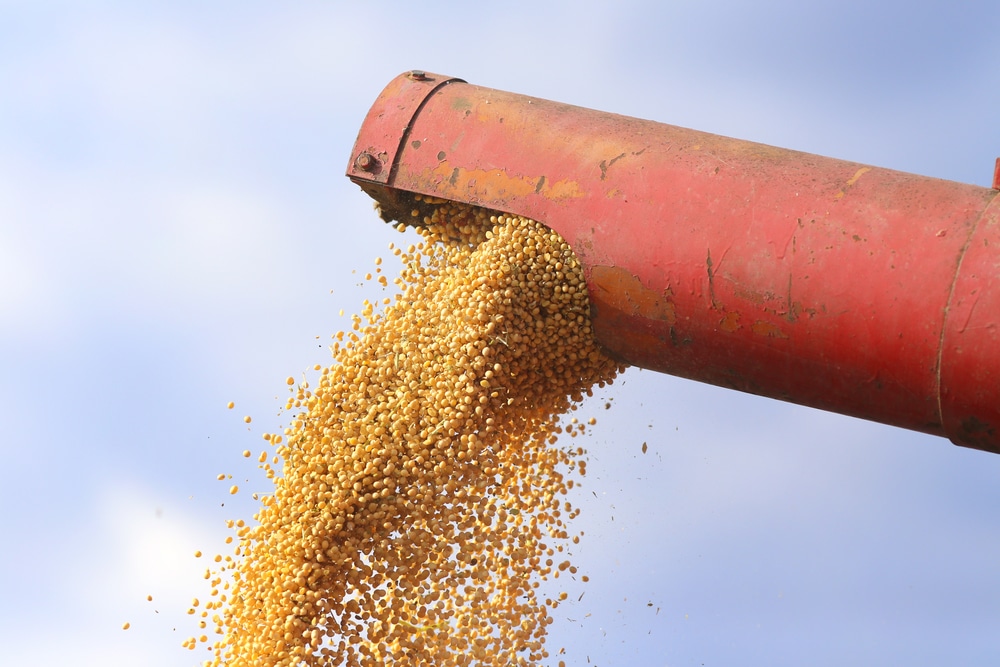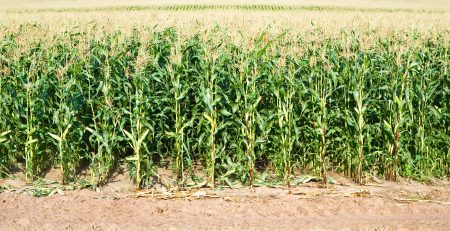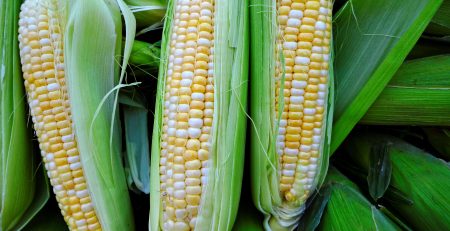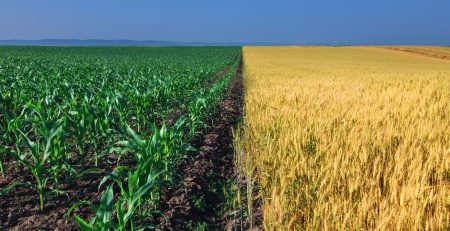WASDE: Soybean Exports Reduced, Corn Increased
CORN
This month’s 2017/18 U.S. corn outlook is for larger exports and increased corn used to produce ethanol. Corn used to produce ethanol is raised 50 million bushels to 5.575 billion based on the most recent data from the Grain Crushings and Co-Products Production report and pace of weekly ethanol production during February, as indicated by Energy Information Administration data. Exports are raised 175 million bushels to 2.225 billion, reflecting U.S. price competitiveness, record-high outstanding sales, and reduced exports for Argentina. With no other use changes, ending stocks are lowered 225 million bushels to 2.127 billion, and if realized would be down from the prior marketing year. The projected range for the season-average corn price received by producers is narrowed 10 cents on the low end to $3.15 to $3.55 per bushel, with the midpoint up 5 cents to $3.35 per bushel.
For sorghum, 2017/18 exports are lowered 15 million bushels to 245 million based on expectations of reduced shipments to China. Offsetting is an increase in projected feed and residual use to 80 million bushels. The midpoint price forecast is unchanged at $3.15 per bushel.
The global coarse grain production forecast for 2017/18 is virtually unchanged at 1,321.96 million metric tons. This month’s foreign coarse grain outlook is for nearly WASDE-575-2 unchanged production, increased use, lower trade, and greater stocks relative to last month. Brazil corn production is down based on expectations of a more modest increase in second-crop corn area. For Argentina, continued heat and dryness during February and into early March reduces yield prospects for late-planted corn. Yield results for earlyplanted corn have also been lower than expected. South Africa corn production is higher as timely rains during reproduction support an increased yield forecast. Partially offsetting is lower expected area. Corn production is raised for India based on the latest information from the government. EU corn production is higher based on recent data for France and Germany. Sorghum production for Australia is down as a period of heat and dryness during the growing season has reduced yield prospects. Area is also reduced.
Major global trade changes for 2017/18 this month include higher projected corn exports for the United States more than offsetting a reduction for Argentina. Sorghum exports are lowered for Australia, reflecting reduced exportable supplies. Corn and barley imports are raised for China, partially offset by lower imports of sorghum. Barley imports are lowered for Saudi Arabia, based on tenders to date and expectations of robust demand from China. Brazil 2016/17 exports for the local marketing year ending February 2018 are lowered based on data to date. Foreign corn ending stocks for 2017/18 are higher from last month, mostly reflecting increases for Brazil, India, and the EU.
OILSEEDS
U.S. soybean supply and use changes for 2017/18 include higher crush, lower exports, and increased ending stocks compared with last month’s report. Soybean crush is raised 10 million bushels to 1,960 million with increased soybean meal exports. Soybean exports are reduced 35 million bushels to 2,065 million with increased production and exports for Brazil. Soybean stocks are projected at 555 million bushels, up 25 million from last month. With increased crush, soybean oil production is raised. An increase in food use is more than offset by lower biodiesel use, leaving domestic disappearance lower this month. Lower biodiesel use reflects lower-than-expected soyoil-based biodiesel production through the first quarter of the marketing year. With increased production and lower use, soybean oil stocks are forecast higher.
The season-average soybean price range forecast of $9.00 to $9.60 per bushel is unchanged at the midpoint. Soybean oil prices are forecast at 30 to 33 cents per pound, down 1 cent at the midpoint. Soybean meal prices are projected at $325 to $355 per short ton, up $20.00 at the midpoint. Higher soybean meal prices reflect the impact of sharply lower soybean production in Argentina.
Global oilseed production for 2017/18 is projected at 574.5 million tons, down 4.1 million from last month. Argentina soybean production is forecast at 47.0 million tons, down 7.0 million from last month mainly due to lower projected yields resulting from dry conditions through much of the growing region in January and February. Brazil soybean production is raised 1.0 million tons to 113.0 million, reflecting the most recent report from the Brazilian government. Global rapeseed production is projected at 73.9 million tons, up 0.9 million with larger crops for China and Australia partly offset with a smaller crop projected for India. Other changes include higher sunflowerseed production for China and Kazakhstan, lower sunflowerseed production for Russia, and higher cottonseed production for Sudan.
Global oilseed trade for 2017/18 is reduced 1.2 million tons mainly on lower soybean exports. Lower soybean exports forecast for Argentina, the United States, and Uruguay are only partly offset with a higher projection for Brazil. Global soybean crush is raised with higher crush projected for Brazil and the United States partly offset by lower crush in Argentina. Global soybean ending stocks are projected at 94.4 million tons, down 3.7 million from last month. Reduced soybean stocks in Argentina and Brazil are only partly offset by an increase for the United States.
WHEAT
U.S. wheat exports for 2017/18 are reduced 25 million bushels to 925 million, while ending stocks are raised by the same amount. Exports are lowered on reduced price competitiveness in some international markets. Hard red winter wheat and hard red spring wheat exports are reduced 15 million bushels and 10 million bushels, respectively. The season-average farm price is raised $0.05 per bushel at the midpoint of the range to $4.65 on NASS prices reported to date and expectations of higher cash prices for the remainder of the marketing year, reflecting the ongoing drought in the Southern Plains.
Global 2017/18 wheat supplies increased 0.5 million tons, primarily on a higher production forecast for Kazakhstan. World exports are raised fractionally with Russia increased 1.5 million tons, partially offset by a 1.0-million-ton reduction for the EU. Russia exports are now projected at 37.5 million tons, up 35 percent from the previous year’s record and surpassing EU exports by 12.5 million. Global imports are also raised, led by a 1.0-millionton increase for Turkey, which is largely attributed to supplies from Russia. Total world consumption is reduced, primarily on a 2.0-million-ton reduction for India on reports of weakening demand from rising domestic prices. Despite the reduction, total India consumption is still up marginally from the previous year’s record. With global supplies rising and total demand falling, world ending stocks are raised 2.8 million tons to a record 268.9 million.
COTTON
This month’s 2017/18 U.S. cotton forecasts show lower production, higher exports, and lower ending stocks relative to last month. Production is reduced 233,000 bales to 21.0 million, based on the March 8 Cotton Ginnings report. The final estimates for this season’s U.S. area, yield, and production will be published in the May 2018 Crop Production report. Domestic mill use is unchanged from last month, but exports are raised 300,000 bales to 14.8 million, based on stronger world demand and expectations of above-average shipments during the second half of the marketing year. Ending stocks are lowered 500,000 bales to 5.5 million. The projected range for the marketing year average price received by producers of 68.0 to 70.0 cents per pound is narrowed by 1 cent at each end from last month.
The forecast for 2017/18 global production is raised nearly 600,000 bales this month due to revisions in Sudan’s estimates back to 2013/14 and higher area in Australia, partially offset by smaller crops in the United States and Uzbekistan. Sudan’s 2017/18 forecast is raised 730,000 bales based on reports of new technology and investment, and Australia’s production is raised 300,000 bales following reports area previously forecast for sorghum was planted to cotton.
World consumption is raised slightly, while world trade is forecast 600,000 bales higher, as higher expected imports by Turkey, Bangladesh, China, and Vietnam more than offset a decline for Taiwan. World ending stocks are now projected at 88.8 million bales, nearly 300,000 bales above last month.
RICE
The 2017/18 U.S. rice supply and use estimates are unchanged relative to last month. The projected season-average farm price (SAFP) for all rice classes are unchanged at the midpoint. The SAFP for all rice is $12.50 per cwt at the midpoint of the range of $12.10 to $12.90.
Global 2017/18 rice production is raised to a new record of 486.3 million tons, fractionally surpassing last year’s record. Almost all of the production increase is for India, where production is raised to 110.0 million tons, based on the India government updated data for 2017/18. The increase in India’s production more than offsets a reduction in Sri Lanka, where production is now below average for the second consecutive year. Global 2017/18 trade is raised to a record 47.3 million tons, mainly on higher exports expected from India with greater exportable supplies. World ending stocks are projected increasing to 143.1 million tons for 2017/18, which would match the second highest on record. China now holds over 66 percent of total stocks.
LIVESTOCK, POULTRY, AND DAIRY
The 2018 forecast for total red meat and poultry production is fractionally lower than last month, as lower beef production more than offsets higher pork and turkey production. Broiler production is unchanged. The beef production forecast is reduced from the previous month on lower first-quarter slaughter and lower weights. However, the decline is offset somewhat by higher second-quarter fed beef production and higher non-fed beef production during the first half of the year. Pork production is lowered for the first half of the year on a slower pace of slaughter, but higher carcass weights are expected and second-half production is increased. USDA will release the Quarterly Hogs and Pigs report on March 29th, providing an indication of producer intentions for farrowings in the next two quarters. First-quarter egg production is reduced on recent hatchery data. Estimates of 2017 broiler, turkey meat, and egg supply and utilization are adjusted to reflect revised annual production and storage summary data.
For 2018, beef imports are raised as early-year demand remains robust. No change is made to beef exports. The pork import forecast is raised on expected demand strength. Export forecasts are also raised from last month. Broiler exports are unchanged, but turkey exports are reduced slightly on weaker expected demand in key markets.
Cattle and hog prices for the first quarter of 2018 are raised from last month on current price movements. The second-quarter broiler price forecast is raised from last month on stronger expected demand. Turkey prices are reduced through the third quarter on the continued slow recovery in demand. Egg price forecasts are raised on robust demand.
The milk production forecast for 2018 is raised from last month on more rapid growth in milk per cow in the first half of the year. The 2018 imports on a fat and skim-solids basis are reduced on slower sales of a number of processed dairy products. Exports on fat basis are raised on increased cheese sales and exports on a skim-solids basis are raised on stronger sales of both cheese and whey products. The supply and use estimates are adjusted to reflect revisions to 2016 and 2017 milk production and 2017 storage data.
Annual product price forecasts for cheese and butter are raised from the previous month as recent prices have increased. However, continued large supplies of nonfat dry milk (NDM) are expected to pressure NDM prices, and the forecast is reduced. No change is made to the annual whey price forecast. The Class III price is raised on the cheese price projection, while the Class IV price is down, as the lower NDM price more than offsets a higher butter price forecast. The all milk price is forecast at $15.75 to $16.35 per cwt, unchanged at the midpoint.
This article was first published on https://www.qtwebhostdemo.com.











